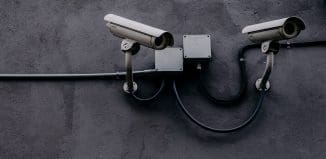Audio Adds Value to Remote Video Surveillance
This post is also available in:  עברית (Hebrew)
עברית (Hebrew)
Securing remote and isolated infrastructure such as pipelines is challenging. Threats vary from illegal trespassing, vandalism, copper theft to sabotage. Security systems need to be able to not only alert to incidents, but also to enable operators to identify the type, scope and severity of an incident so that the proper action can be taken. Traditional security system components – such as microwave barriers, motion and trampling sensors – all require a second confirmation level in order to clearly identify an incident and to exclude the possibility of a false alarm.
Pipeline perimeters are sometimes not easy to clearly define and to cordon off. This is especially true for pipelines in remote locations. Wildlife and weather conditions can trigger false sensor alarms.
According to worldpipelines.com, remote video surveillance monitoring with audio talk down capabilities is proving to be a very effective and powerful combination for protecting remote and isolated pipelines. Alarm monitoring services and security guard companies increasingly substitute manned guards with video surveillance and centralised control centres, which monitor the feeds.
Network audio enables an effective way to intervene directly at the scene of an incident. When video surveillance cameras or perimeter detection devices identify a breach of the perimeter or people loitering, an alarm message is displayed in the control centre. This can either automatically trigger a pre-recorded audio message to be played back at the scene of the incident, or the operator can quickly assess the situation from video footage and live feeds before responding by speaking through a microphone. The operator can also talk directly to the perpetrators at the scene of the incident before deciding whether to dispatch a security team. This adds an important human element to the security solution even if there are no guards in the vicinity, and can potentially de-escalate a situation without placing personnel in danger.
Network audio can be used to communicate warnings, orders or requests from a remote control centre location directly to people trespassing, loitering or otherwise needing to be addressed. In a situation where a person has been injured, being able to remotely communicate with and notify the victim that help is on the way can greatly help with managing the incident.
Security services company, Securitas, is using network audio to make its video surveillance services more effective. The company is offering real time cloud-based remote video surveillance (security as a service).
“Horn speakers allow our operators to immediately intervene when video analytics alerts us of trespassing at customer sites,” says Lars Kämpe, Business Development Manager at Securitas. The company equips virtually all of its outdoor perimeter protection installations with loudspeakers.
Audio talk down is a function that is supported by most video management software solutions (VMS), either by allowing the operator to speak directly by pressing a button in the video view or by automatically playing back pre-recorded audio messages on different previously defined triggers. This native VMS integration makes it easy to add audio talk down to a video surveillance system. Many network cameras come equipped with onboard audio capability. If there is external power available, an amplifier and analogue speaker can be connected to the audio output of the camera.
Network horn speakers provide a simple to install and complete paging solution in a single unit. With Power over Ethernet (PoE), the unit gets power and connection over a single network cable, just like a network camera does. This means you do not need an external power supply or any additional equipment.
Network horn speakers allow operators to monitor the connection and status of each unit at all times. This is not possible with analogue speakers. Operators would not be sure an analogue speaker is operational at any given time or that its volume or sound quality are sufficient.
Multiple locations can easily be integrated and managed centrally. Network horn speakers feature a built-in microphone and onboard analytics allowing for automatic self-checks to ensure the sound quality is always optimal.





























